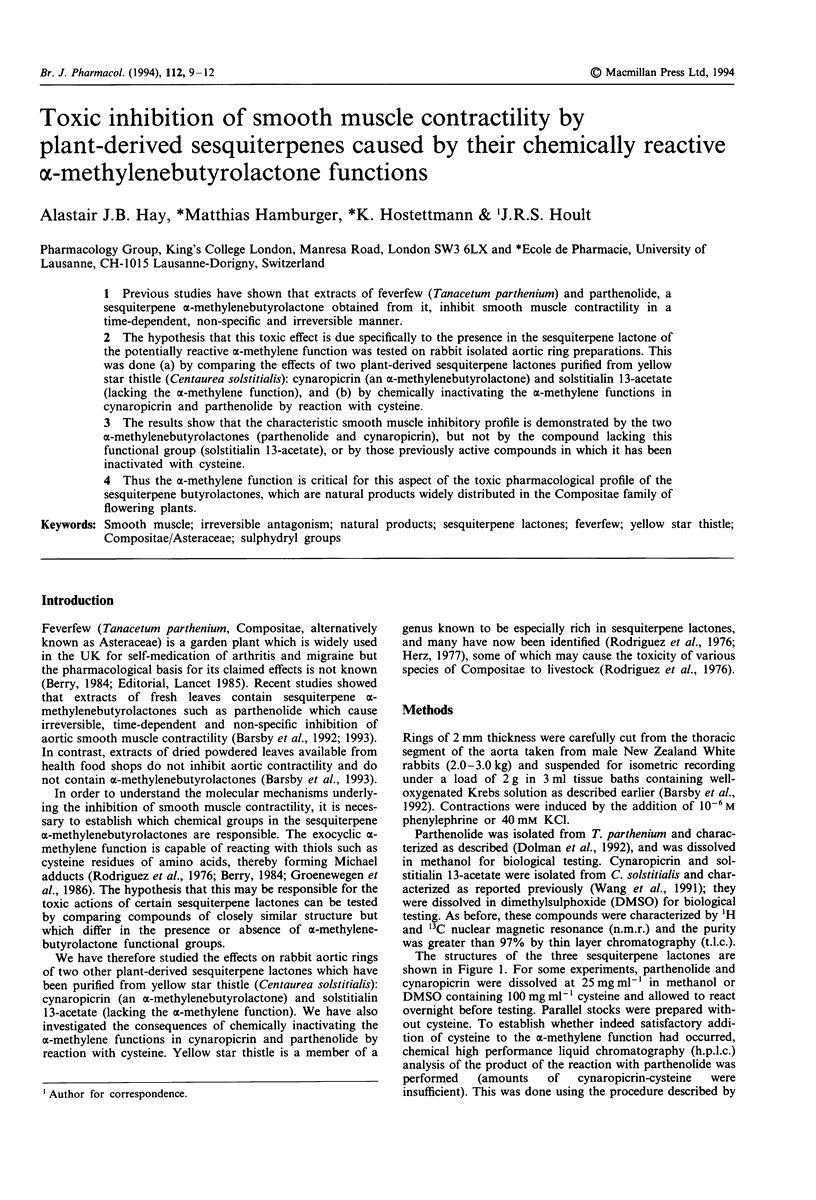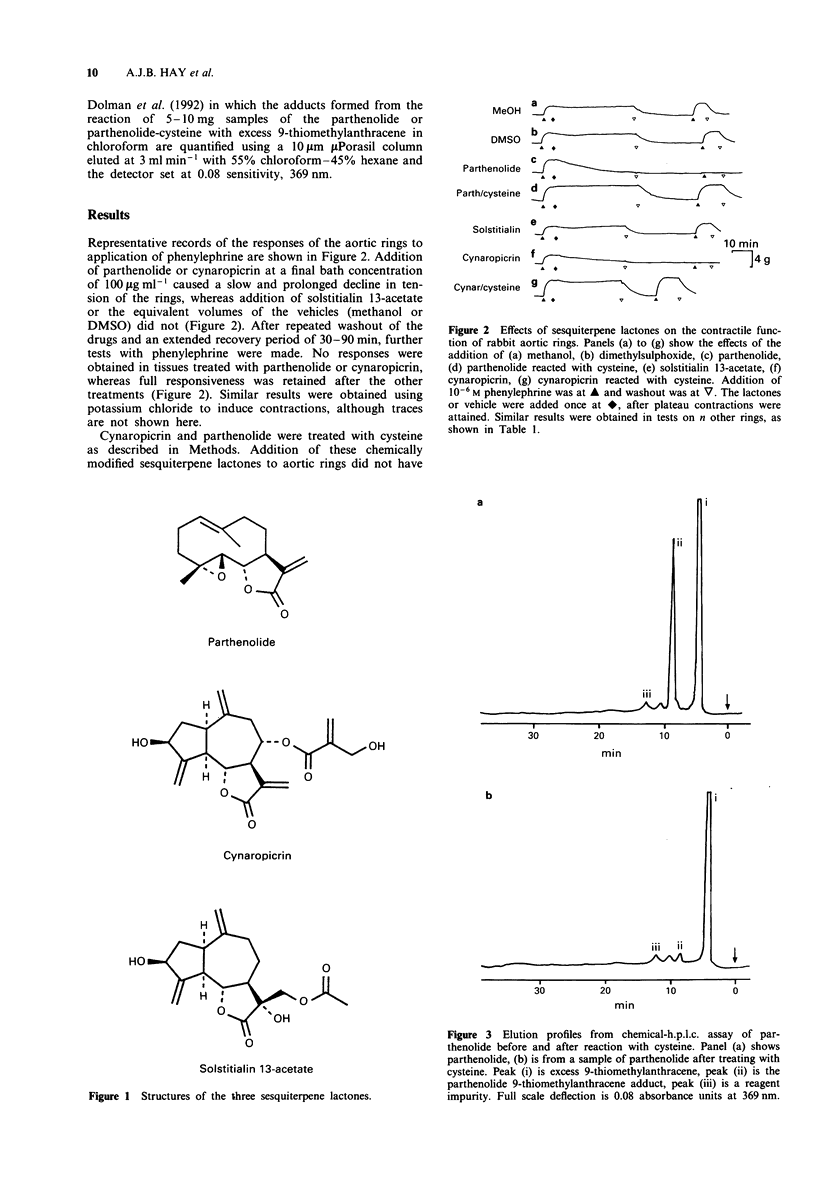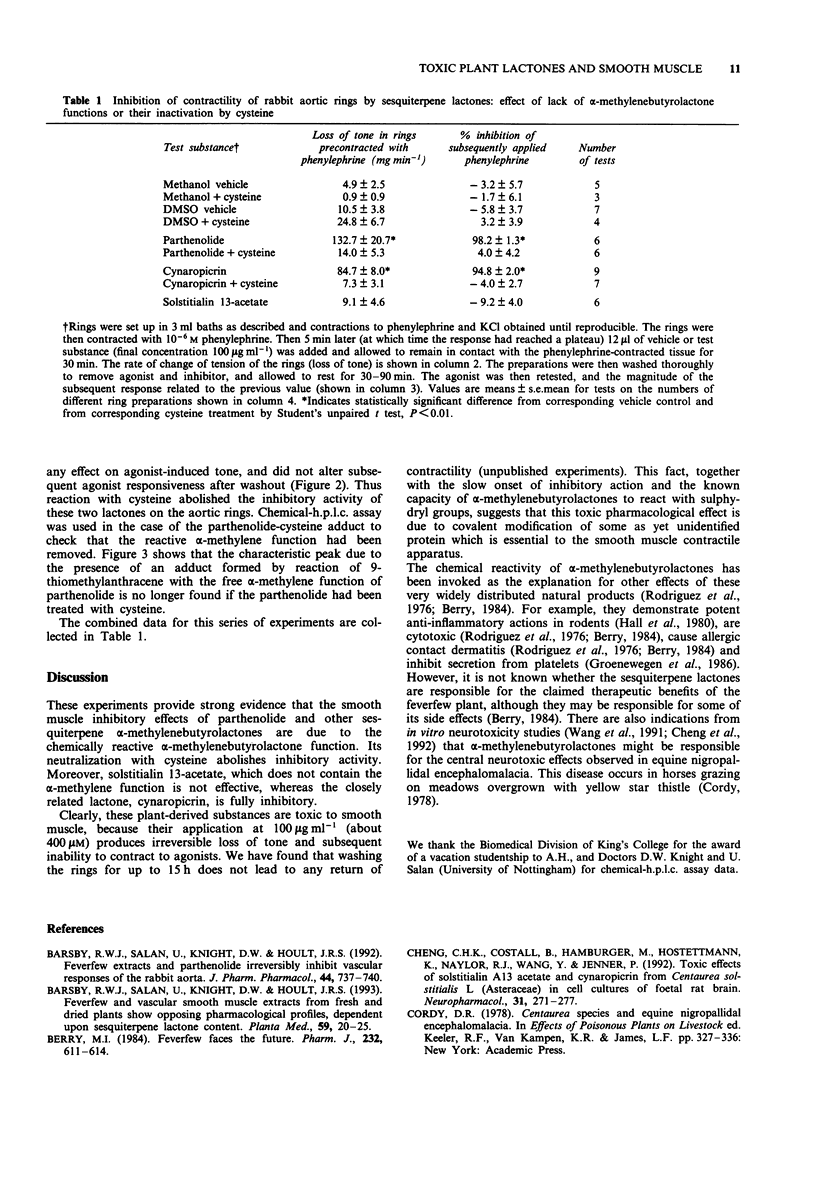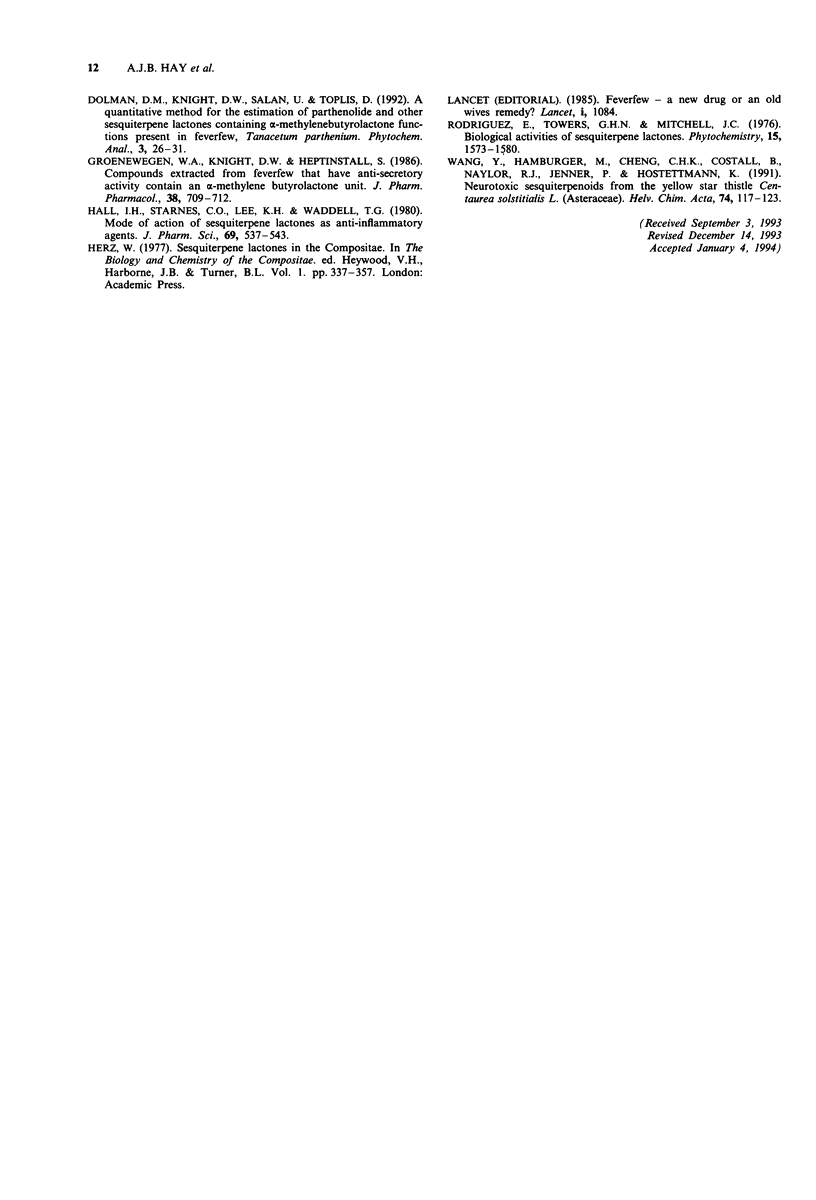Abstract
1. Previous studies have shown that extracts of feverfew (Tanacetum parthenium) and parthenolide, a sesquiterpene alpha-methylenebutyrolactone obtained from it, inhibit smooth muscle contractility in a time-dependent, non-specific and irreversible manner. 2. The hypothesis that this toxic effect is due specifically to the presence in the sesquiterpene lactone of the potentially reactive alpha-methylene function was tested on rabbit isolated aortic ring preparations. This was done (a) by comparing the effects of two plant-derived sesquiterpene lactones purified from yellow star thistle (Centaurea solstitialis): cynaropicrin (an alpha-methylenebutyrolactone) and solstitialin 13-acetate (lacking the alpha-methylene function), and (b) by chemically inactivating the alpha-methylene functions in cynaropicrin and parthenolide by reaction with cysteine. 3. The results show that the characteristic smooth muscle inhibitory profile is demonstrated by the two alpha-methylenebutyrolactones (parthenolide and cynaropicrin), but not by the compound lacking this functional group (solstitialin 13-acetate), or by those previously active compounds in which it has been inactivated with cysteine. 4. Thus the alpha-methylene function is critical for this aspect of the toxic pharmacological profile of the sesquiterpene butyrolactones, which are natural products widely distributed in the Compositae family of flowering plants.
Full text
PDF



Selected References
These references are in PubMed. This may not be the complete list of references from this article.
- Barsby R. W., Salan U., Knight D. W., Hoult J. R. Feverfew and vascular smooth muscle: extracts from fresh and dried plants show opposing pharmacological profiles, dependent upon sesquiterpene lactone content. Planta Med. 1993 Feb;59(1):20–25. doi: 10.1055/s-2006-959596. [DOI] [PubMed] [Google Scholar]
- Barsby R. W., Salan U., Knight D. W., Hoult J. R. Feverfew extracts and parthenolide irreversibly inhibit vascular responses of the rabbit aorta. J Pharm Pharmacol. 1992 Sep;44(9):737–740. doi: 10.1111/j.2042-7158.1992.tb05510.x. [DOI] [PubMed] [Google Scholar]
- Cheng C. H., Costall B., Hamburger M., Hostettmann K., Naylor R. J., Wang Y., Jenner P. Toxic effects of solstitialin A 13-acetate and cynaropicrin from Centaurea solstitialis L. (Asteraceae) in cell cultures of foetal rat brain. Neuropharmacology. 1992 Mar;31(3):271–277. doi: 10.1016/0028-3908(92)90177-q. [DOI] [PubMed] [Google Scholar]
- Groenewegen W. A., Knight D. W., Heptinstall S. Compounds extracted from feverfew that have anti-secretory activity contain an alpha-methylene butyrolactone unit. J Pharm Pharmacol. 1986 Sep;38(9):709–712. doi: 10.1111/j.2042-7158.1986.tb03118.x. [DOI] [PubMed] [Google Scholar]
- Hall I. H., Starnes C. O., Jr, Lee K. H., Waddell T. G. Mode of action of sesquiterpene lactones as anti-inflammatory agents. J Pharm Sci. 1980 May;69(5):537–543. doi: 10.1002/jps.2600690516. [DOI] [PubMed] [Google Scholar]


